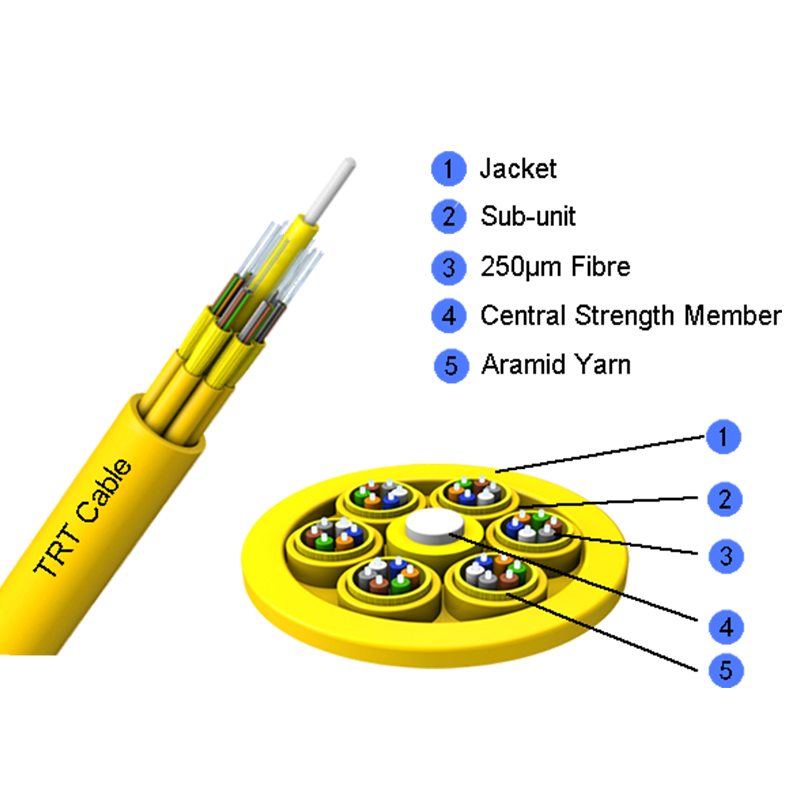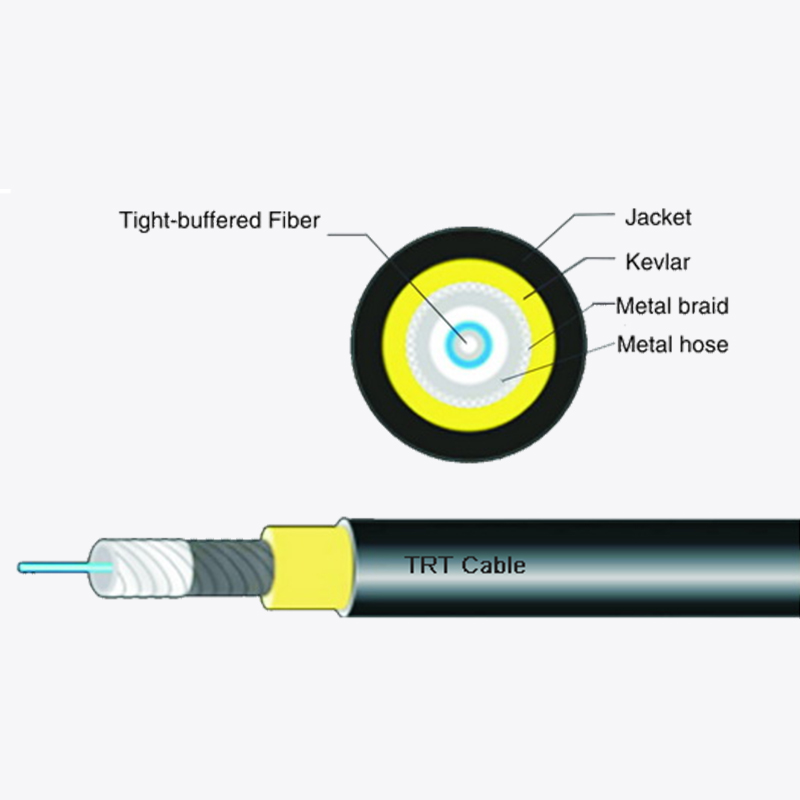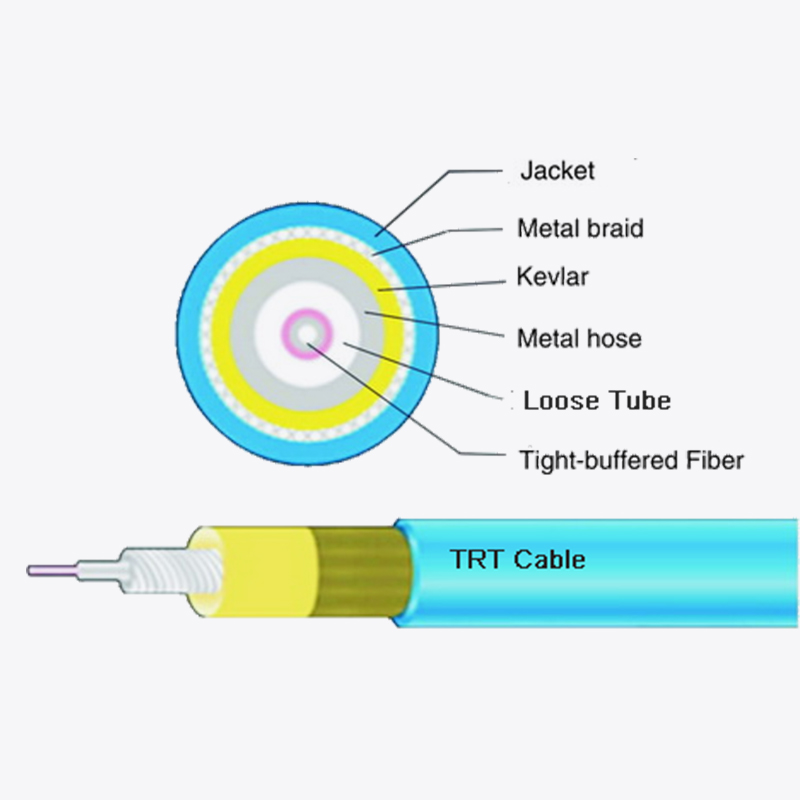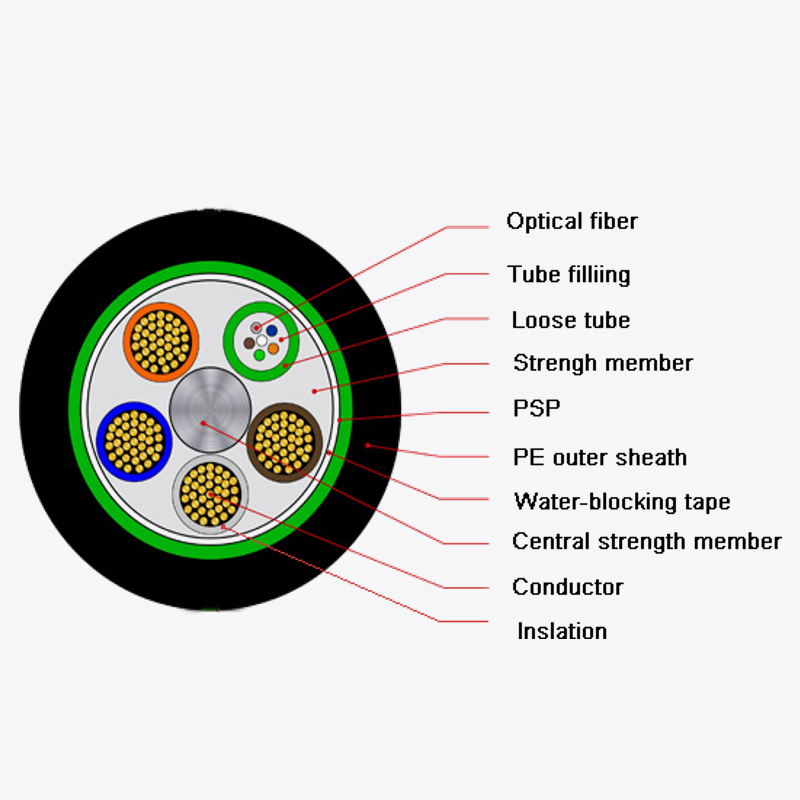Web Menu
Product Search
Exit Menu
How do micro-fiber indoor cables break through the limitations of traditional wiring?

How do micro-fiber indoor cables break through the limitations of traditional wiring?
Why is micro-fiber becoming the new favorite for indoor wiring? ——Counting the 5 major technological breakthroughs
With the rapid development of communication technology, the innovation of indoor wiring system is imminent. Traditional copper cables have long dominated indoor wiring, but with the surge in data transmission demand, their limitations have become increasingly prominent. Micro-fiber indoor cable is gradually becoming the new favorite of indoor wiring with five core technological breakthroughs.
In terms of diameter, traditional copper cables have complex internal structures and require multiple layers of shielding and insulation materials to wrap the conductive copper core, resulting in a generally thicker diameter, generally around 6-12 mm. Micro optical fibers use high-purity glass or plastic as transmission media and are drawn through a special process. Their diameter can be as small as 100-300 microns, which is only a few tenths of the diameter of traditional copper cables. This extremely fine diameter not only greatly saves wiring space, but also makes wiring in narrow pipes, wall mezzanines and other spaces easier. It is particularly suitable for scenes such as the renovation of ancient buildings and concealed wiring in finely decorated houses.
In terms of bandwidth performance, traditional copper cables are limited by the physical characteristics of electrical signal transmission. Within a transmission distance of 100 meters, common Category 5e copper cables can only support a maximum transmission rate of 1Gbps, and Category 6 copper cables can only reach 10Gbps. In sharp contrast, micro-fibers use optical signals for data transmission. At the same distance of 100 meters, single-mode micro-fibers can even achieve ultra-high-speed transmission of more than 100Gbps, and multi-mode micro-fibers can easily reach 10Gbps - 40Gbps, fully meeting the needs of 5G base stations, data centers, high-definition video conferencing, etc. for high-speed, large-capacity data transmission.
In terms of anti-interference ability, traditional copper cables transmit electrical signals and are very susceptible to electromagnetic interference. In strong electromagnetic environments such as large computer rooms and substations, signals transmitted by copper cables are prone to attenuation, distortion, and even data loss. Micro optical fibers transmit optical signals, which are not affected by electromagnetic interference. Even in strong electromagnetic environments, they can still transmit data stably and accurately, ensuring the reliability and stability of communications.
In terms of weight, traditional copper cables are heavy due to the presence of copper cores and a large amount of wrapping materials. A 100-meter Category 6 copper cable can weigh several kilograms. Micro-fibers are lightweight, and a 100-meter micro-fiber weighs only tens of grams, which greatly reduces the difficulty of handling during construction and the load-bearing burden of buildings. They are especially suitable for weight-sensitive places such as high-rise buildings and aerospace.
In terms of service life, the copper core of traditional copper cables will gradually oxidize and corrode during long-term use, and the insulation layer will also age, resulting in a decrease in transmission performance. The service life is generally around 10-15 years. The chemical properties of micro-optical fibers are stable, and under normal use and maintenance conditions, the service life can reach 25-30 years, reducing the cost and workload of frequent replacement of wiring in the later stage.
It is these five technological breakthroughs that allow micro-optical fibers to demonstrate advantages far exceeding traditional copper cables in the field of indoor wiring, becoming an inevitable trend in the future development of indoor wiring.
Are installation problems really there? ——Unveiling the three key techniques for micro-fiber construction
Although micro-fiber has significant performance advantages, there are indeed some technical difficulties in the installation process due to its own characteristics. However, mastering the following three key skills can effectively solve these problems and ensure the smooth progress of micro-fiber construction.
The first key skill is the bending radius processing. The diameter of the micro optical fiber is extremely thin, and the glass or plastic core inside is relatively fragile. Excessive bending can easily cause the core to break, affecting the transmission of optical signals. Therefore, during the construction process, the bending radius of the micro optical fiber must be strictly controlled. Generally speaking, the minimum bending radius of multi-mode micro optical fiber should not be less than 10 times its diameter, and the minimum bending radius of single-mode micro optical fiber should not be less than 15 times its diameter. In actual operation, special bending protection tools, such as bending protection sleeves, can be used to insert the micro optical fiber into them for bending operations. For example, when introducing the micro optical fiber into the wall cable trough, first insert the micro optical fiber into the bending protection sleeve, and then slowly bend it into the cable trough, which can not only protect the micro optical fiber from damage, but also ensure the neatness and beauty of the wiring.
The second key skill is the splicing technology. The splicing quality of micro-optical fibers directly affects the transmission loss and stability of optical signals. At present, the commonly used micro-optical fiber splicing methods are mainly fusion splicing and mechanical splicing. Fusion splicing uses high temperature to melt and fuse the end faces of two micro-optical fibers together. This method can achieve lower transmission loss. Generally, the fusion splicing loss can be controlled below 0.05dB, but it has high technical requirements for the operating environment and operators, and requires the use of a professional fusion splicer. Mechanical connection is to connect two micro-optical fibers together through a high-precision mechanical structure. The operation is relatively simple and suitable for rapid on-site construction, but the transmission loss is relatively high, generally around 0.1-0.3dB. In actual construction, the appropriate splicing method should be selected according to the specific scenario. For trunk lines with high requirements for transmission quality, fusion splicing is preferred; for some temporary wiring, branch lines and other scenarios, mechanical connection can be used.
The third key skill is the adaptation plan for special scenarios. In some special scenarios, such as humid environments, high temperature environments, strong vibration environments, etc., special protective measures need to be taken for the installation of micro-optical fibers. In humid environments, micro-optical fibers with waterproof properties should be selected, and the connection points should be waterproof and sealed. Waterproof tapes, waterproof joints and other materials can be used. In high temperature environments, high temperature resistant micro-optical fibers and sheath materials should be selected, and direct contact between micro-optical fibers and high temperature objects should be avoided. If necessary, a heat insulation layer can be added. For strong vibration environments, such as industrial plants, transportation hubs and other places, micro-optical fibers need to be reinforced and fixed, and anti-seismic brackets, shock absorbers and other devices should be used to prevent micro-optical fibers from loosening or breaking due to vibration.
By mastering the above three key skills, the difficulties encountered in the micro-fiber construction process will be solved, ensuring that the micro-fiber indoor wiring project is completed efficiently and with high quality.
How to choose the most suitable model? ——Indoor micro fiber optic purchase guide
Faced with a wide variety of indoor micro-fiber models on the market, how to choose the most suitable product has become a major problem that troubles users. When purchasing indoor micro-fiber, you need to consider multiple factors. The following is a detailed purchase guide for you.
The choice should be based on the transmission distance and rate requirements. If it is a short-distance transmission, such as home network wiring (generally no more than 100 meters), and the transmission rate requirement is not particularly high (such as 1Gbps - 10Gbps), you can choose multi-mode micro fiber. Multi-mode micro fiber supports multiple modes of optical signal transmission, and the cost is relatively low. Common OM3 and OM4 multi-mode micro fiber can meet the network requirements of most homes and small offices within a distance of 100 meters. For long-distance transmission (more than 100 meters), or scenarios that require ultra-high-speed transmission (such as more than 10Gbps), such as data centers, large enterprise campus networks, etc., single-mode micro fiber should be selected. Single-mode micro fiber only allows one mode of optical signal transmission, which can achieve a longer transmission distance and higher transmission rate. For example, G.652D single-mode micro fiber can stably transmit 10Gbps data within 10 kilometers. Consider the use environment. As mentioned above, different use environments have different performance and protection requirements for micro fibers. If it is used in an ordinary indoor environment, you can choose a regular non-armored micro-fiber, which is light, flexible and easy to install. However, if it is used in an environment with rodent damage or susceptible to mechanical damage, you should choose an armored micro-fiber, whose outer metal armor layer can effectively protect the internal fiber core. For micro-fibers that need to be used in places with high fire protection requirements, you should choose models with low smoke and halogen-free characteristics. This type of micro-fiber will not produce a large amount of toxic smoke when burning and meets fire safety standards.
Pay attention to the number of optical fibers. Determine the number of fibers required based on the actual network topology and connection requirements. For simple point-to-point connections, such as the connection between a computer and a router, a single-core or dual-core microfiber can meet the needs. For complex network systems, such as integrated wiring in large offices, server cluster connections in data centers, etc., you may need to use multi-core microfiber bundles or fiber ribbons. Common products include 4-core, 8-core, 12-core, or even more core products. Multi-core microfibers can transmit multiple signals at the same time, improving wiring efficiency and network capacity.
Finally, choose reliable brands and suppliers. Well-known brands of micro-fiber are more guaranteed in terms of product quality, performance stability and after-sales service. When purchasing, you can check the relevant certifications of the product, such as UL certification, CE certification, etc. These certifications are important proof that the product quality and performance meet international standards. At the same time, choose suppliers with a good reputation and rich experience. They can provide professional technical support and installation guidance to help users better complete the purchase and use of micro-fiber.
Taking all the above factors into consideration, users can choose the most suitable indoor micro-fiber model according to their actual needs and give full play to the advantages of micro-fiber in indoor wiring.
 Address:Zhong'an Road, Puzhuang Town, Suzhou City, Jiangsu Prov., China
Address:Zhong'an Road, Puzhuang Town, Suzhou City, Jiangsu Prov., China Phone:+86-189 1350 1815
Phone:+86-189 1350 1815 Tel:+86-512-66392923
Tel:+86-512-66392923 Fax:+86-512-66383830
Fax:+86-512-66383830 Email:[email protected]
Email:[email protected] Wechat: xiaobin18913501815
Wechat: xiaobin18913501815 whatsapp: +86 18913501815
whatsapp: +86 18913501815
 0
0

 English
English русский
русский Español
Español Português
Português عربى
عربى



